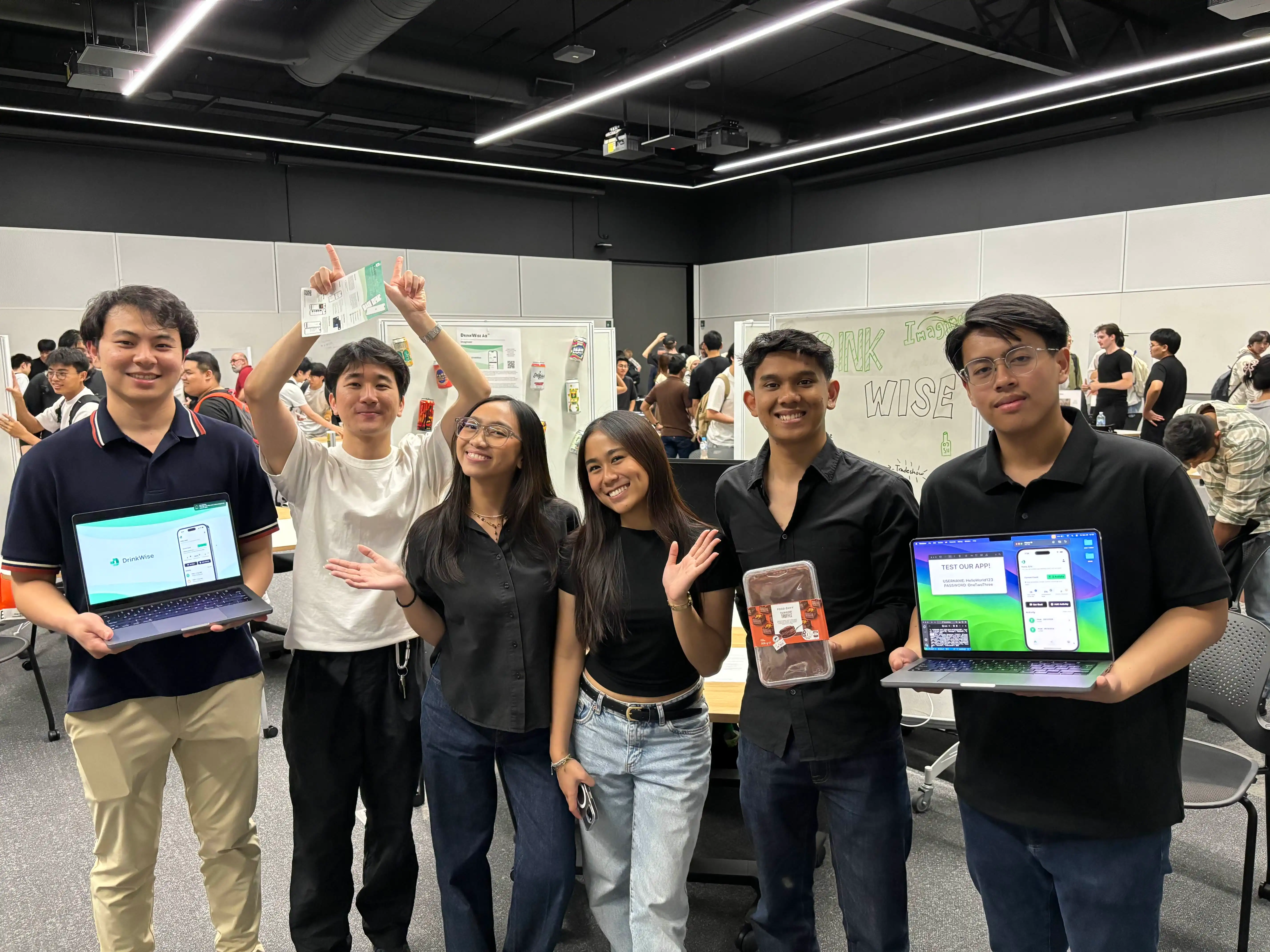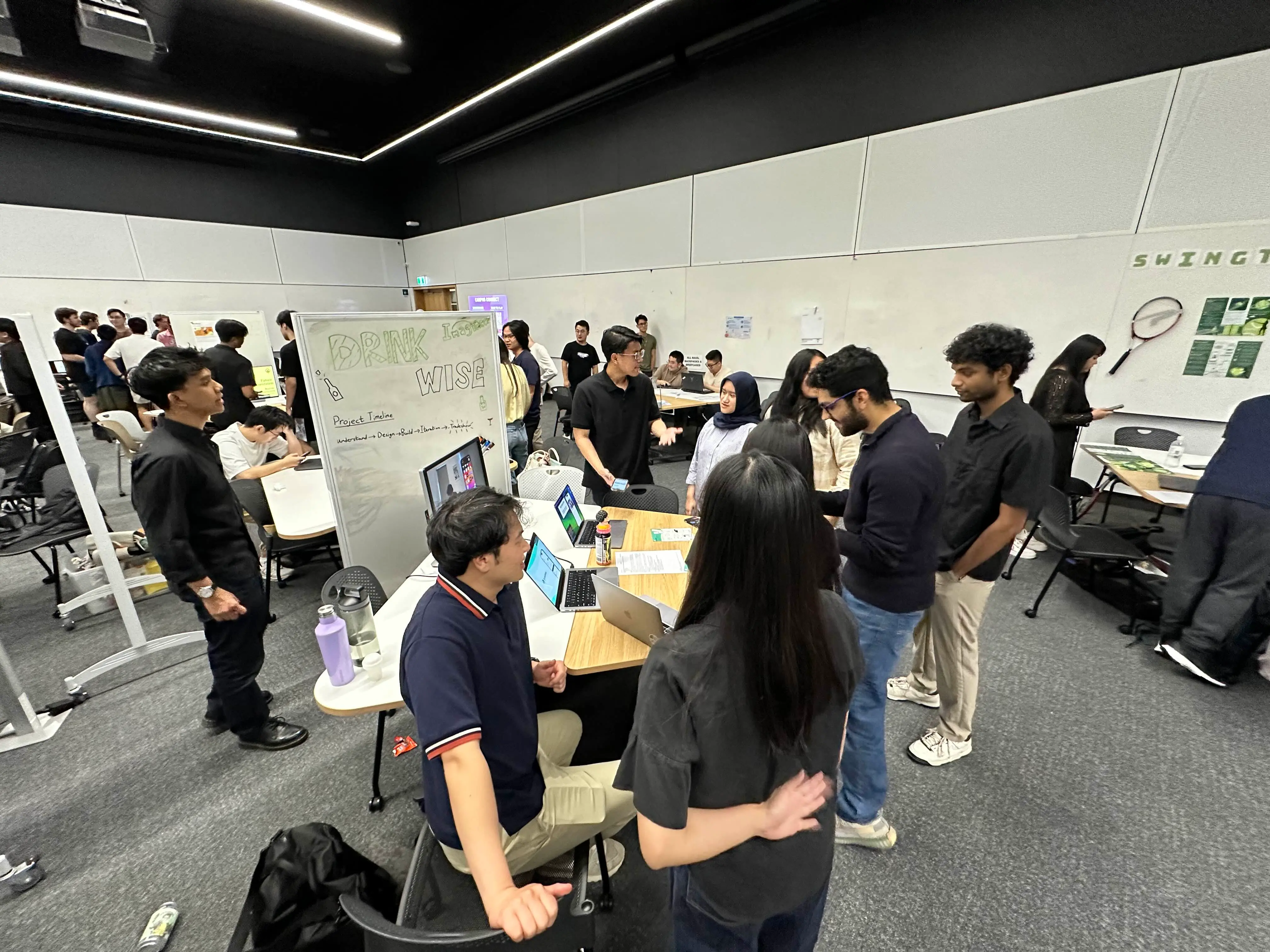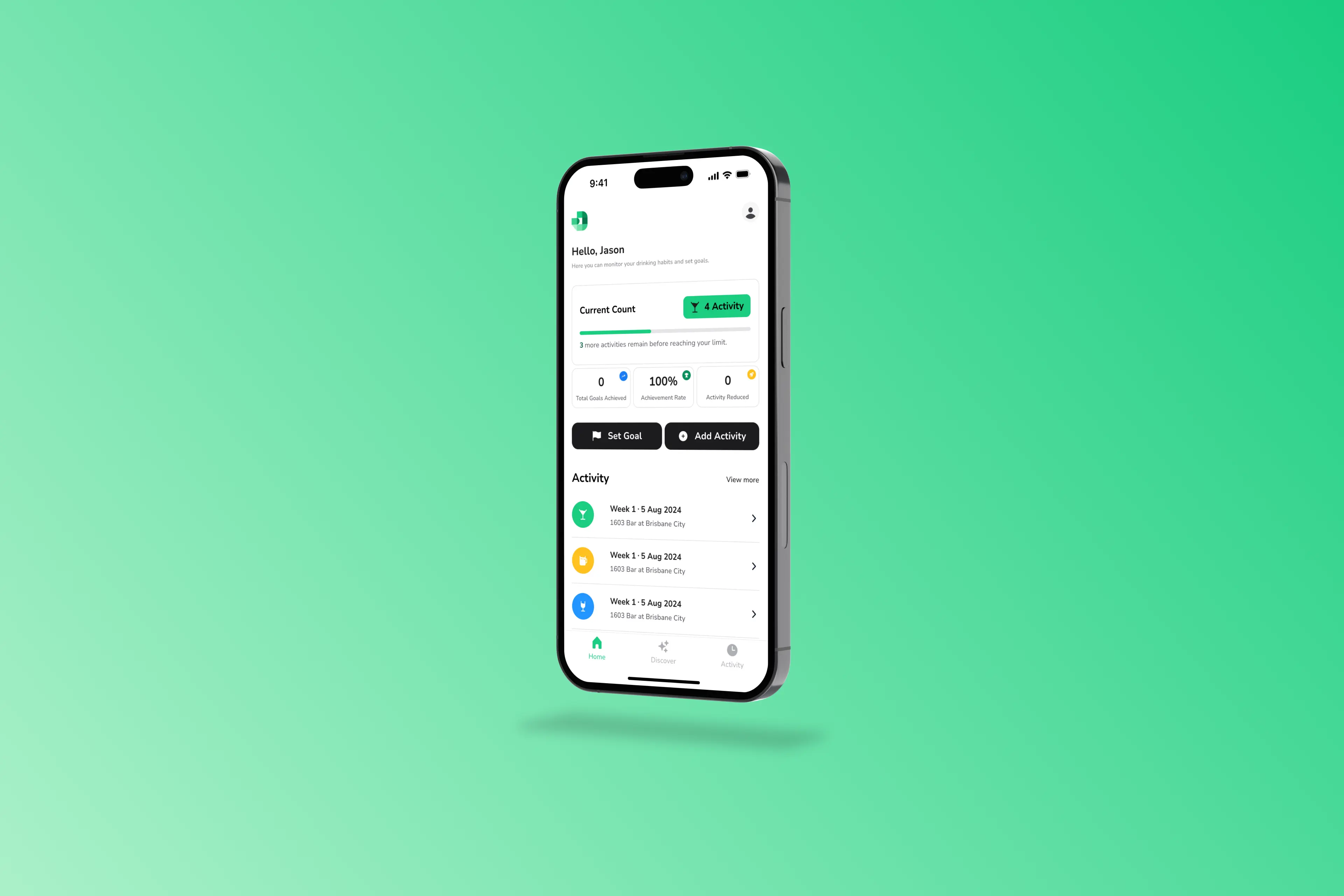
DrinkWise is a mobile app designed to help young Australians curb alcohol consumption through personalised support, habit tracking, and healthier social alternatives. As my capstone project for my master's degree, our team tackled the issue of alcohol abuse by creating a solution that promotes long-term behavioural change.
In this project, I led a team of five computer science students, serving as the sole designer and front-end developer. Beyond crafting an intuitive UI and building a cohesive design system, I acted as the bridge between design and development, ensuring seamless implementation. I collaborated closely with developers, collecting feedback to refine interactions and translate designs into practical, scalable solutions. Additionally, I aligned individual contributions with project goals and timelines, reinforcing a strong balance between innovation and feasibility.
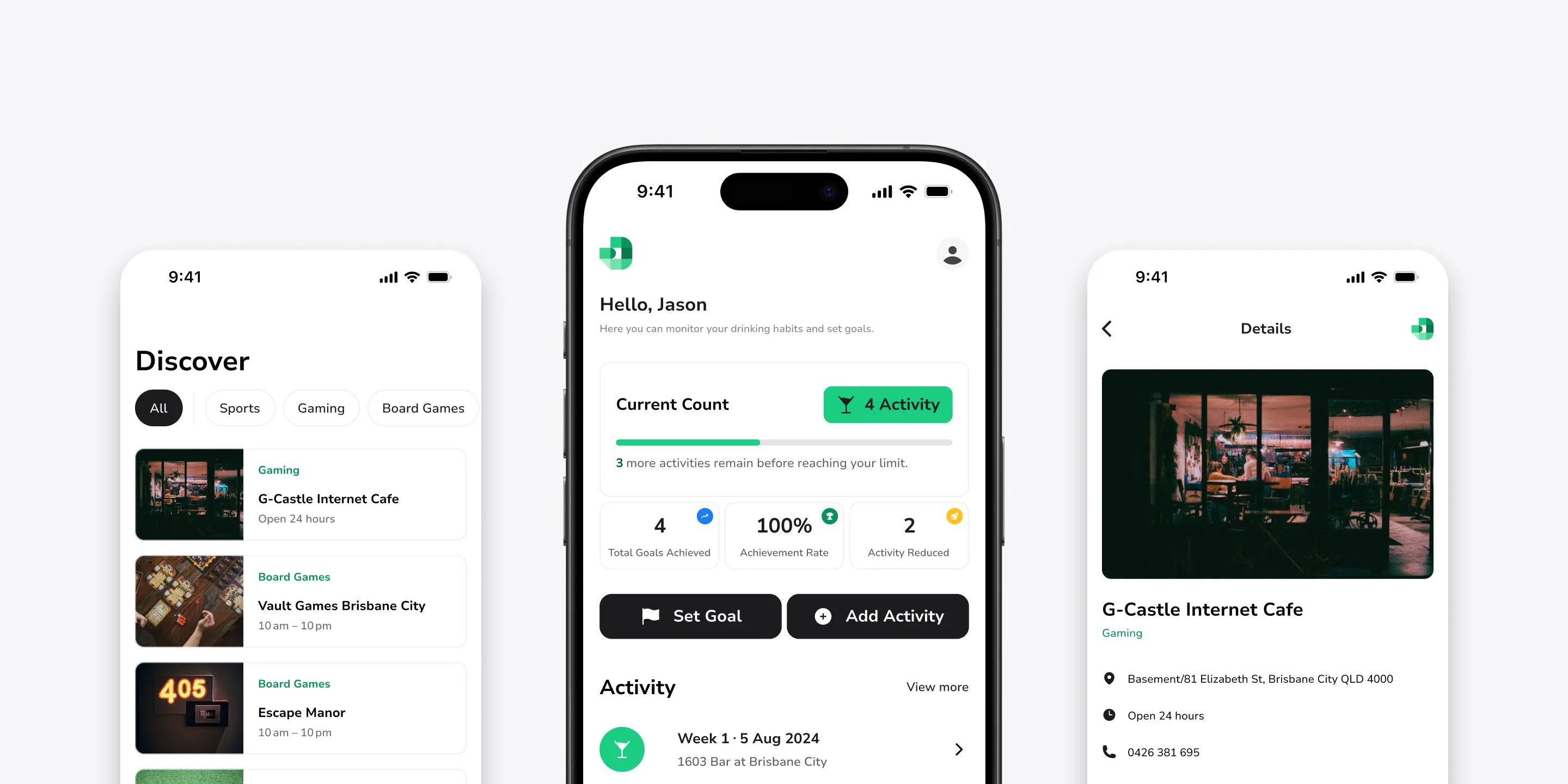
From the outset, I prioritised understanding my team members’ strengths and backgrounds to foster effective collaboration. Since we had never worked together before, I initiated conversations to align expectations and define clear project goals. To bridge the gap between design and development, I asked three key questions:
How have you worked with designers in the past?
How do you think a design can be practically implemented?
Are there any frameworks you are familiar with and would like to use?
These discussions provided valuable insights into the team’s experience with design and development, shaping how I approached the design process. By understanding their technical preferences and constraints, I tailored the level of design detail to ensure seamless implementation. This early alignment laid the groundwork for an efficient workflow, enabling us to build an intuitive and technically feasible solution together.
When we first embarked on this project, we quickly realised the severity of alcohol overconsumption, especially among young adults. The issue became even more personal when some of our friends were involved in drunk driving incidents, nearly causing accidents and injuries. This firsthand experience reinforced our determination to tackle the problem. Through extensive research, we discovered that social pressure and stress were major contributors to frequent drinking habits, shaping our approach to design a solution that not only tracks alcohol intake but also offers healthier, socially engaging alternatives.
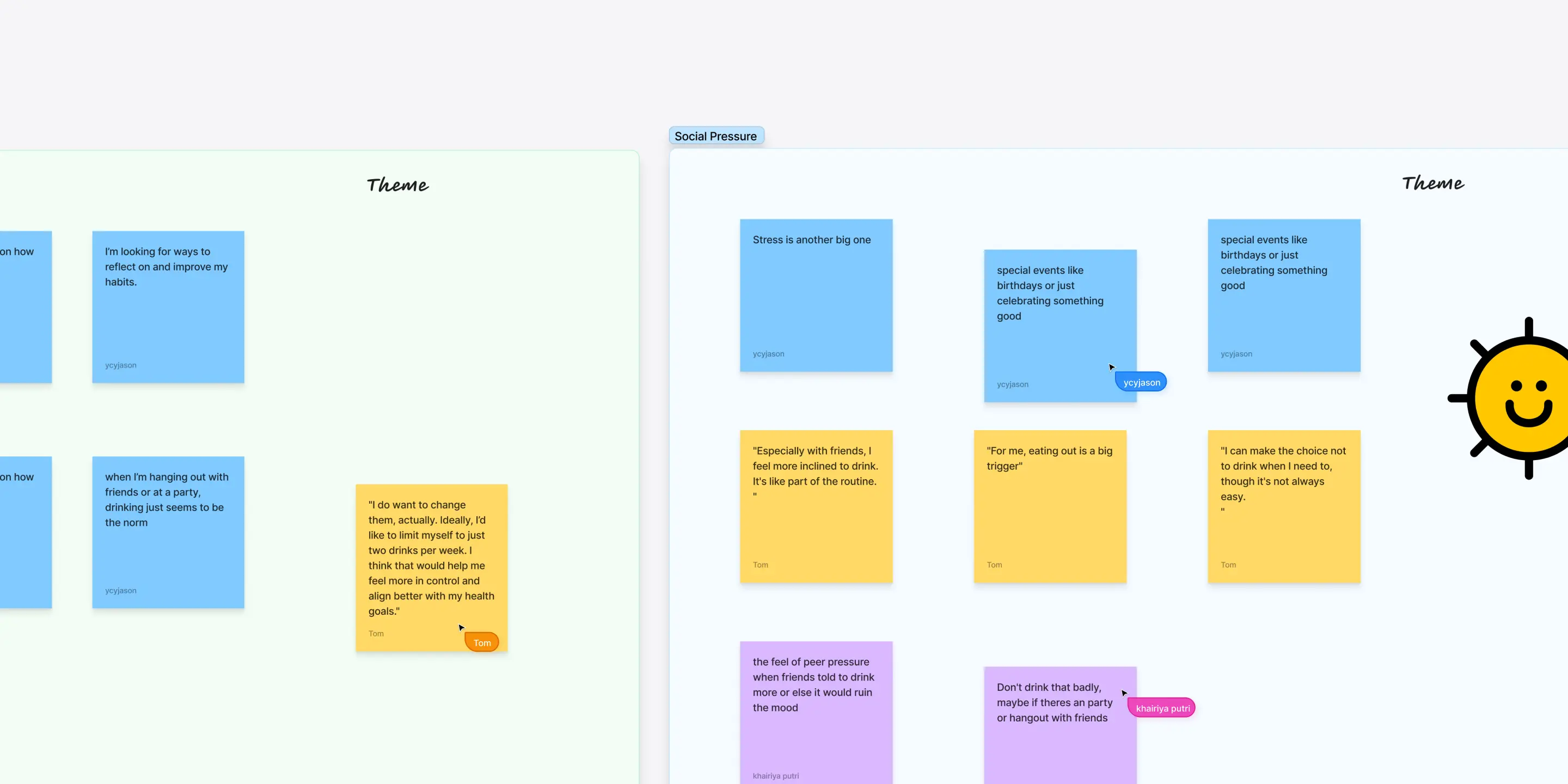
Our design prioritises user freedom after discovering that many young adults feel dissatisfied when products overwhelm them with excessive control or information, especially when addressing personal habits. Instead of taking an intrusive approach, we designed features that gently guide users toward self-awareness and change, ensuring they feel empowered rather than restricted.
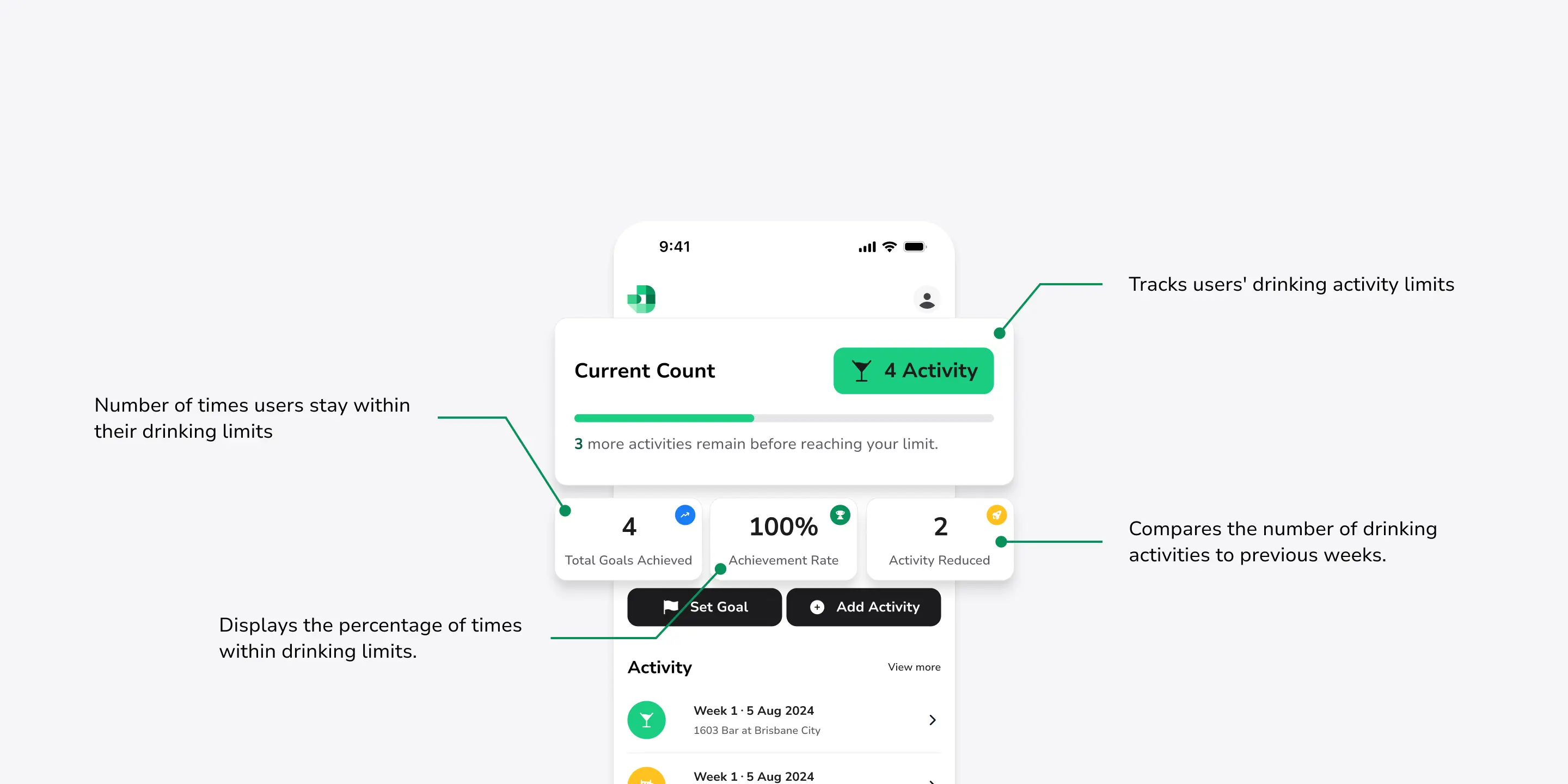
Many young adults want to reduce their drinking, but existing apps fail to provide meaningful progress tracking or a sense of achievement when they make positive changes. Without clear feedback, users struggle to stay motivated.
Create a dashboard that offers real-time insights into drinking patterns, reinforcing progress with positive reinforcement and actionable feedback.
Tracks users’ goals and shows weekly achievements to reinforce motivation.
Displays drinking activity reduction trends for self-awareness.
Provides cumulative progress tracking since app adoption.
Sends push notifications to report milestones and keep users engaged.
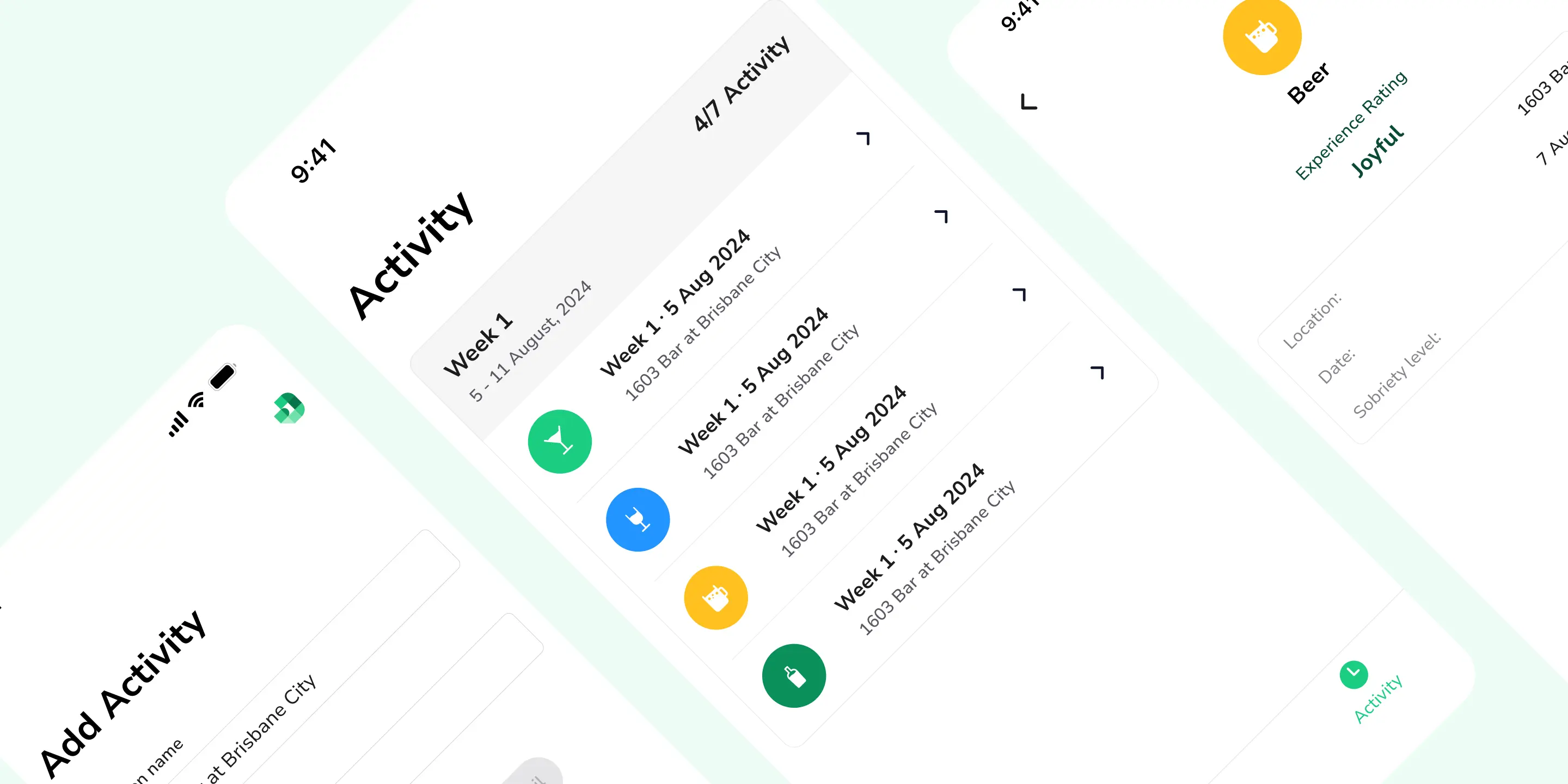
Young adults often neglect or forget their drinking habits, making it difficult for them to reflect on patterns and understand the triggers behind their behaviour. Our research revealed that many interviewees experienced moments of self-reflection but lacked a clear record to analyse their habits.
Introduce a detailed logging system that encourages self-awareness, helping users identify drinking patterns and make more informed choices.
Allows users to log drinking activities with timestamps and contextual details.
Enables them to review past records, fostering reflection and awareness.
Contributes to progress tracking, reinforcing accountability.
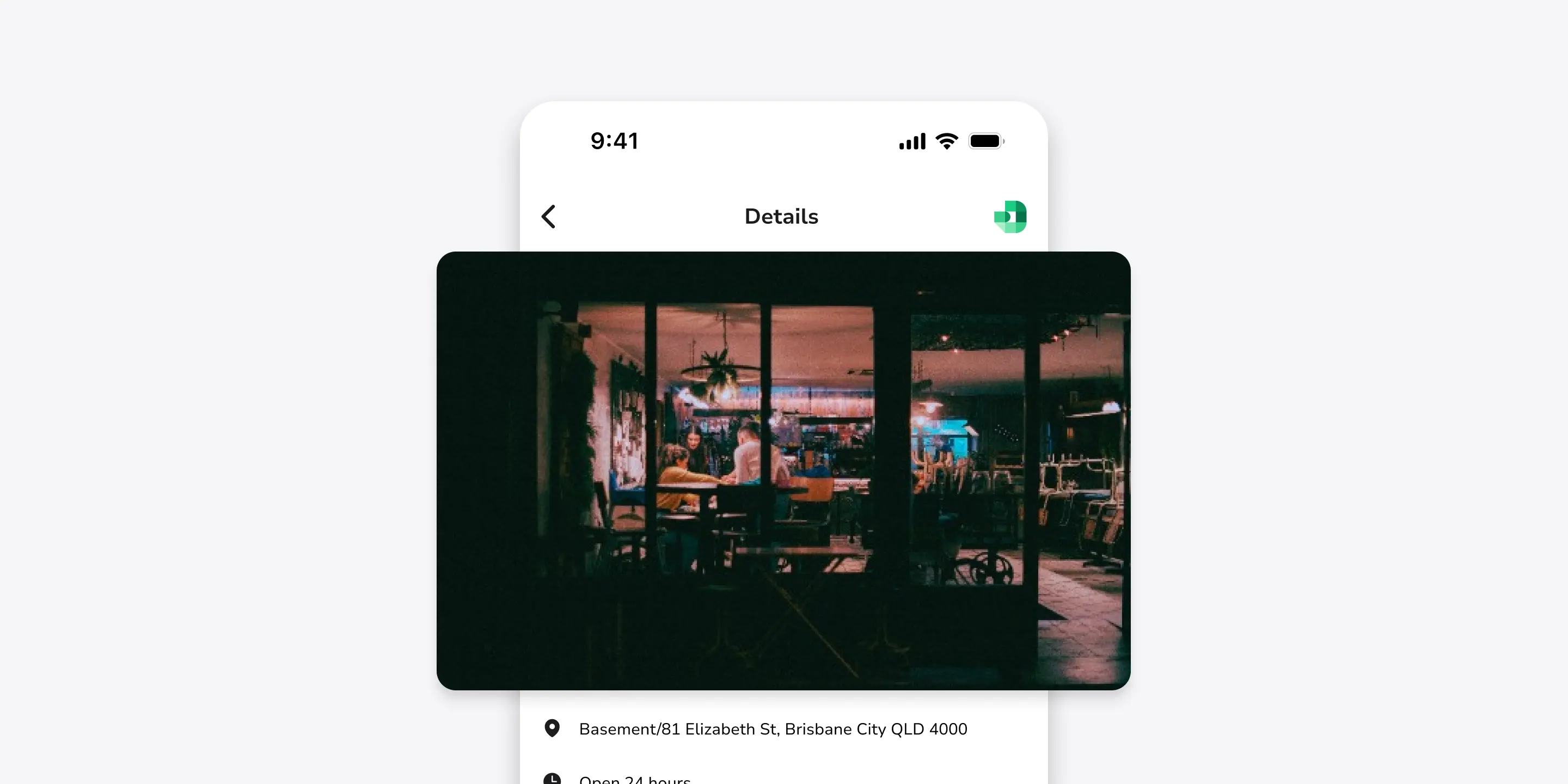
Many young adults associate alcohol with social confidence and peer acceptance. Some feel pressured to drink in social settings, making it difficult to engage in alcohol-free experiences.
Social engagement without alcohol by recommending fulfilling, alternative activities tailored to users' interests.
Suggests personalised social events based on user preferences.
Uses push notifications to recommend alternative activities at key moments.
Reinforces the idea that meaningful social experiences don't have to involve alcohol.
To ensure seamless implementation, I maintained constant communication with the development team throughout the design process. By involving developers early—through discussions on component feasibility, prototype reviews, and UI framework alignment—I gathered valuable feedback that improved technical feasibility.
Since the team was familiar with Tailwind CSS, I customised its design system to match the app’s branding and documented it thoroughly. I believe that as a designer, understanding technical aspects leads to more practical and effective designs. Instead of relying solely on theory, I prefer hands-on experience. To bridge the gap between design and development, I learned the basics of React Native and set up the development environment using Expo Router, ensuring a smoother transition from design to implementation.
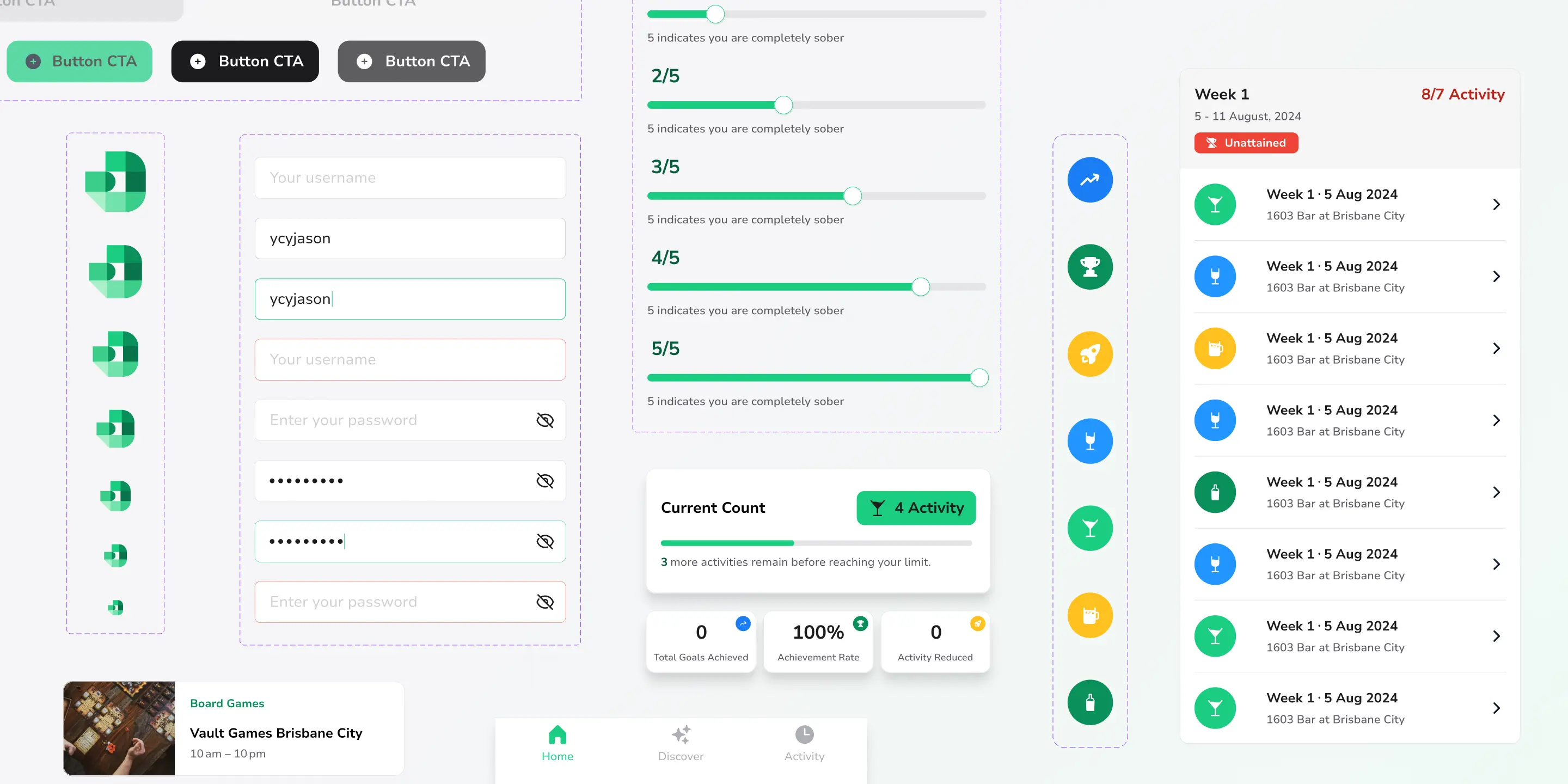
To measure the success of DrinkWise, I evaluated the app using key performance indicators, including usability testing, the System Usability Scale (SUS), and direct user feedback.
Six interviewees participated in usability testing, where all tasks were completed in under 10 seconds. Users expressed overall confidence in navigating the app, though some suggested the addition of a reward system for goal achievements and the ability to select commonly consumed drinks. The app successfully met usability goals, enabling quick and seamless task completion, which is vital for user engagement.
The app achieved an average SUS score of 82.08, indicating excellent usability. Participants praised the app's ease of use and intuitive design. However, feedback pointed to inconsistencies in the UI and some cumbersome areas, which will be addressed for further UX refinement.
The app was well-received for helping users track their drinking habits, set limits, and find alternative activities. While most found the notifications helpful, some requested more control over reminder timing. This led to an update allowing users to choose their preferred reminder days. Overall, the app was praised for its effectiveness in reducing alcohol consumption.
The project received a Grade 7 (High Distinction) and was nominated as one of the best solutions among 30+ competing teams. It will be showcased as an exemplary case for future students taking the course.
Directed, filmed, and edited by Jason Yeung
Wrapping up my Master's degree at UQ with the DrinkWise project has been an incredibly rewarding experience. Leading a cross-disciplinary team of five computer science students, we developed DrinkWise, a mobile app aimed at helping young Australians reduce alcohol consumption through habit tracking and personalised activity suggestions. As the only designer, I learned the importance of being open to new areas, like front-end development, and collaborated closely with the team to create a seamless design system that aligned with technical needs. This project not only honed my design and leadership skills but also fostered team bonding and personal growth. I’m proud of what we achieved and excited to bring these experiences into my future career as a product designer.
